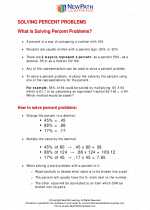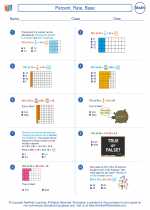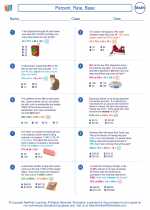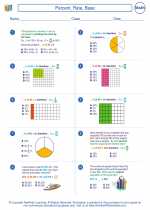Percent, Rate, Base -> decimals
Decimals
Decimals are a way of representing parts of a whole. They are similar to fractions, but instead of using a numerator and a denominator, decimals use a decimal point to separate the whole number part from the fractional part.
Understanding Decimals
Decimals are based on powers of 10. Each place value to the right of the decimal point is divided by 10. For example, in the decimal 3.57, the 3 is in the ones place, the 5 is in the tenths place, and the 7 is in the hundredths place.
Converting Decimals to Fractions
To convert a decimal to a fraction, you can use the place value of the last digit. For example, the decimal 0.75 can be written as 75/100, which can be simplified to 3/4. So, 0.75 as a fraction is 3/4.
Operations with Decimals
When performing operations with decimals, it's important to align the decimal points before adding, subtracting, multiplying, or dividing. For addition and subtraction, you should add or subtract as if there were no decimal point, then place the decimal point in the answer directly below the other decimal points. For multiplication and division, you should ignore the decimal points and perform the operation as if the numbers were whole numbers, then count the total decimal places in the factors and place the decimal point that many places from the right in the product or quotient.
Rounding Decimals
When rounding decimals, identify the place value you want to round to, then look at the next digit. If it's 5 or more, round up; if it's less than 5, round down. For example, if you want to round 3.568 to the nearest hundredth, you look at the digit in the thousandths place (8) and round up to 3.57.
Comparing Decimals
To compare decimals, start from the left and compare the digits in each place value. If the digits are the same, move to the next place value. If all the digits are the same, the decimals are equal. If the digits differ, the decimal with the larger digit is greater.
Study Guide
- What is a decimal and how is it related to fractions?
- How do you convert a decimal to a fraction?
- What are the rules for performing operations with decimals?
- How do you round decimals to a given place value?
- What is the process for comparing decimals?
Understanding decimals is essential for many mathematical operations and real-world applications. Practice converting, operating with, rounding, and comparing decimals to strengthen your skills in this area.
.◂Math Worksheets and Study Guides Sixth Grade. Percent, Rate, Base

 Worksheet/Answer key
Worksheet/Answer key
 Worksheet/Answer key
Worksheet/Answer key
 Worksheet/Answer key
Worksheet/Answer key
